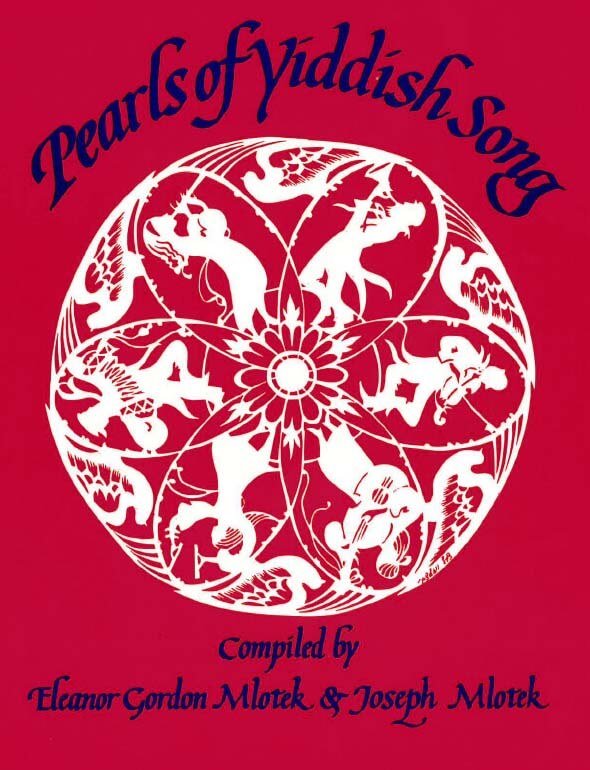Words by Boris Rosenthal (1881-1938) and Jacob Kalich (1891-1975); music by Joseph Rumshinsky (1881-1956). Published in sheet music as “Yankele” by Kessler’s Second Avenue Theatre, Trio Press, Inc., N.Y., 1924. The song was sung in 1923-24 in Kalich’s musical comedy Yankele, which starred Molly Picon.

I am a young child still in kheyder, as you can see,
Everyone loves me as if I were their own.
I’ve got a smart mouth
and I like to play hooky.
I am mischievous, a real rascal,
just like a Cossack, on good terms with everyone.
Everyone trembles before me,
whoever sees me on the street
begins to shout:
There goes Yankele.
Yankele is right over there,
and because he is a good little boy,
everyone asks, How’s he doing? and, What he’s up to?
Who is Yankele?
This is Yankele!
Every mother wishes
that her own child will be
as talented as Yankele.
A kind nokh in kheyder bin ikh dokh atsind,
Lib hot mikh yeder, vi an eygn kind.
A piskl hob ikh vi oyf shroyfn,
Fun kheyder lib ikh tsu antloyfn,
lkh bin dokh a mazik, a yingl gor a khvat,
Punkt vi a kozak mit yedn pani-brat.
Yederer far mir tsitert on a shir,
Ver es zet mikh oyf der gas
Shrayt oys bald oyf mir:
Refrain:
Ot geyt Yankele,
Dort shteyt Yankele,
Vayl er iz a yingele a guter,
Yeder fregt, vos makht er, vos tut er?
Vos iz Yankele?
Dos iz Yankele.
Yede mame vintsht atsind
Az gerotn zol ir kind
Zayn azoy vi Yankele.
אַ קינד נאָך אין חדר בין איך דאָך אַצינד,
ליב האָט מיך יעדער, װי אַן אײגן קינד.
אַ פּיסקל האָב איך װי אױף שרױפֿן,
פֿון חדר ליב איך צו אַנטלױפֿן,
איך בין דאָך אַ מזיק, אַ ייִנגל גאָר אַ כװאַט,
פּונקט װי אַ קאָזאַק מיט יעדן פּאַני־בראַט.
יעדער פֿאַר מיר ציטערט אָן אַ שיעור,
װער עס זעט מיך אױף דער גאַס
שרײַט אױס באַלד אױף מיר:
רעפֿרײן:
אָט גײט יאַנקעלע,
דאָרט שטײט יאַנקעלע,
װײַל ער איז אַ ייִנגעלע אַ גוטער,
יעדער פֿרעגט, װאָס מאַכט ער, װאָס טוט ער?
װאָס איז יאַנקעלע?
דאָס איז יאַנקעלע.
יעדע מאַמע װינטשט אַצינד
אַז געראָטן זאָל איר קינד
זײַן אַזױ װי יאַנקעלע.
Song Title: Ot Geyt Yankele

First published in 1988 as Pearls of Yiddish Song: Favorite Folk, Art and Theatre Songs, this anthology contains 115 songs. Some material had never been published, while others, included in rare song collections or sheet music, were largely inaccessible. The songs presented reflect Jewish life in Eastern Europe and the United States and depict childhood, love, family celebrations, poverty, work and struggle. There are also songs from the Hasidic and Maskilic movements, songs of Zion and of America, as well as songs from the Yiddish theater.
The title of this anthology derives from the weekly two-page feature column “Pearls of Yiddish Poetry,” which the compilers Yosl and Chana Mlotek initiated in 1970 in the Yiddish newspaper Der Forvertz (the Yiddish Daily Forward). Hundreds of readers from around the world — including authors, composers, singers, actors — became co-participants in this collective folk project and recalled melodies, lines, fragments, stanzas and their variants of songs, poems, and plays which they had heard in their youth. At first, readers sent in only written material. Later, they also taped songs on cassettes, many of whose melodies had, until then, never been recorded. They also identified and supplied missing information regarding lyricists, poets, and composers and described the circumstances surrounding the songs’ origins, their dissemination, diffusion and impact.